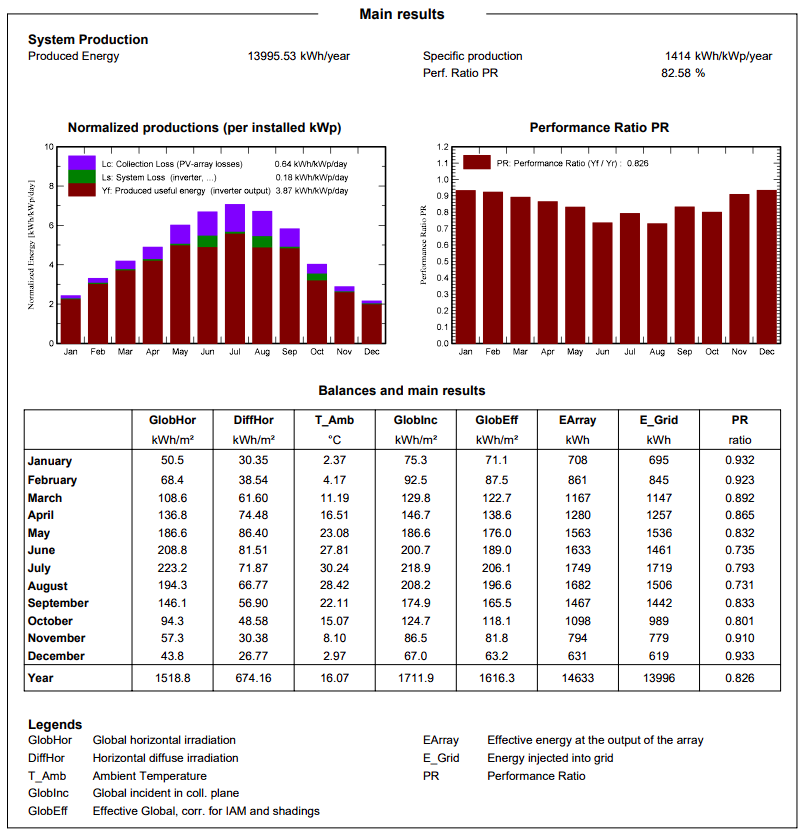When you decide to build a solar power plant (SPP), an exciting design process begins. Even if a professional design engineer handles the technical aspects, you still play a key role in determining the plant's specifications based on your needs.
In this article, we will focus on one important aspect of the design—the ratio of the nominal power of the solar panel field to the nominal power of the inverter. This ratio is called the DC/AC ratio, also known as the inverter load factor or, in industry jargon, DC inverter overload. Overloading an inverter with solar panels is a highly effective strategy that allows solar power plant designers to maximize energy production while minimizing equipment costs.
Why Should You Overload an Inverter?
There are several key reasons why an inverter should be overloaded:
Real-world solar panel power output is lower than in standard lab conditions.
Under actual operating conditions, a solar panel’s output power is typically 75-80% of its nominal value at peak sunlight due to heating. This means that 20% of the inverter's power remains unused.
Higher panel capacity increases energy generation during off-peak hours.
Adding more solar panels helps boost energy production in the morning, evening, and winter months, when sunlight is weaker.
For east-west installations or steep winter tilts, extra panel power compensates for lower efficiency.
If your panels are installed facing east and west, positioned at a suboptimal angle, or tilted steeply for winter performance, their actual power output will always be lower than their rated capacity. To compensate, the total panel power should exceed the inverter's recommended load factor.
Modern high-quality inverters do not shut down when overloaded.
Instead of turning off, they clip excess power and output only their rated capacity to the grid.
More solar panels reduce capital investment per unit of electricity generated.
By increasing the number of panels, you can lower the cost per kWh over the system’s lifetime.
Overloading allows the use of a lower-capacity (cheaper) inverter.
Instead of buying a larger, more expensive inverter, you can save costs by overloading a smaller unit while still achieving high energy output.
How Many Solar Panels Should You Install?
The number of solar panels you should install depends on two main factors:
Available space (on land or rooftops)
Required system capacity
To illustrate this, we conducted simulations using PVSyst, a professional solar power plant design software. While these calculations are theoretical, they provide valuable insights for real-world installations.
For our simulation, we used a Deye inverter and GCL solar panels. The results generated two possible system configurations:
Project A – 15 solar panels, DC/AC ratio: 1.03
Project B – 18 solar panels, DC/AC ratio: 1.24
The PVSyst software generates extensive reports with tables and graphs. For simplicity, we present only the E_Grid parameter, which indicates the amount of electricity sold to the city grid.
Annual Electricity Sold to the Grid:
Project A – 11,686 kWh
Project B – 13,996 kWh
Adding just three extra solar panels results in an additional 2,310 kWh of electricity sold annually. Even if the most expensive panels are used, the payback period will be less than two years. Considering that a solar power plant's design lifespan is at least 25 years, this additional energy translates into significant long-term revenue.
Conclusion: Maximize Panel Count Relative to Inverter Power
From this analysis, it is clear that maximizing the number of solar panels relative to the inverter's rated capacity is a smart investment.
At DCAC, our specialists will help you select the optimal inverter load and ensure the highest efficiency for your solar power plant. Contact us today to get expert advice and a tailored system design.
